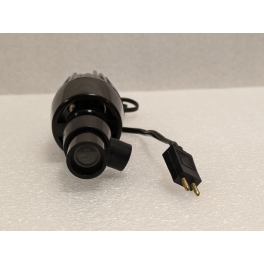The Bausch & Lomb Stereo Zoom Microscope Light Source is a specialized lighting system designed to provide bright, consistent illumination for stereo microscopes. It's typically used in stereomicroscopy applications where precise and adjustable light is needed to view samples with high clarity and contrast.
Description of BAUSCH&LOMB Stereo zoom microscope light source:
⦁ lower power consumption
⦁ white light
⦁ built in bulb
⦁ brighter field
⦁ weigh 240g
Bausch & Lomb is a well-known brand in the microscopy field, and their stereo zoom microscopes often require reliable and adjustable light sources to enhance visibility and image quality.
Key Features of the Bausch & Lomb Stereo Zoom Microscope Light Source:
⦁ Adjustable Light Intensity:
The light source often includes a dimmer or brightness control to adjust the intensity of the light, which is critical for proper sample visualization and to avoid overexposure.
⦁ Type of Light:
The light source typically uses halogen or LED bulbs, which provide bright, stable, and consistent illumination. Some models are equipped with dual light paths for transmitted and reflected light, enabling a range of illumination techniques. LED options offer the advantage of longer life and lower heat output compared to halogen bulbs.
⦁ Illumination Modes:
Reflected light for viewing opaque or solid samples.
Transmitted light for transparent or thin samples.
Many models have a focusing mechanism to direct light where it is needed.
⦁ Versatility and Compatibility:
Compatible with a variety of Bausch & Lomb stereo microscopes and other stereomicroscope models.The light source is designed to work with zoom microscopes used in biological, industrial, material science, and medical research fields.
⦁ Ergonomics:
The light is often designed to be mounted onto the microscope stand or positioned at the correct angle to avoid shadows and optimize sample illumination.
The adjustable gooseneck or flexible arm helps position the light source precisely where it’s needed for various types of sample observation.
⦁ Applications:
Biological Research: Viewing biological samples in laboratories.
Industrial Applications: Inspection of small parts or assemblies, often in electronics or precision engineering.
Medical or Forensic Imaging: Observation of medical slides or small samples.
Educational Use: In classrooms or research institutions for teaching and demonstration
 Maximize
Maximize

 NeuroLabParts provided us with great quality second hand Patch clamp equipment. The prices were very affordable and the items were almost brand new. Their customer service, maintenance and warranty services were GREAT and they helped us a lot in setting up our lab.
They would even follow up with us for updates on the performance of equipment and are always ......
NeuroLabParts provided us with great quality second hand Patch clamp equipment. The prices were very affordable and the items were almost brand new. Their customer service, maintenance and warranty services were GREAT and they helped us a lot in setting up our lab.
They would even follow up with us for updates on the performance of equipment and are always ......












Follow us